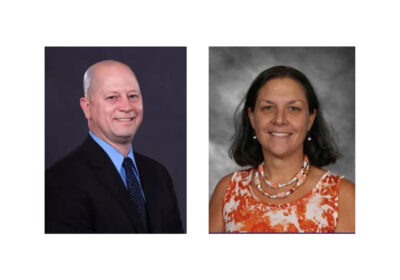
Amanda Peretich Attends NOAA Heritage Week Open House
| Amanda Peretich (2012) represented the Teacher at Sea Program at NOAA’s Heritage Week Open House on Saturday, February 9th at NOAA’s Science Center in Silver Spring, Maryland. A series of free activities was open to the public, including guest presentations, interactive exhibits, and hands-on activities for ages five and up.
Ms. Peretich shared her TAS experience with the public and they learned about coral by making a coral polyp model. Children could choose whether to take their coral model with them or they could add it to a coral colony. Sue Zupko (2011) is credited with the coral activity that was used at the event. NOAA’s Heritage Week is an annual event and is part of the Preserve America Initiative. Other activities at NOAA Heritage Week Open House included: Build a Buoy – Join NOAA in this hands-on activity where children and adults can design, build, and test their very own buoy, all while learning how NOAA uses buoys to study oceans and estuaries. “Let’s Talk Trash!” Game – Test your knowledge, discover facts and debunk myths about marine debris at the Marine Debris Program’s toss game, “Let’s talk trash!” Answer questions correctly to earn a chance to toss a bag into a debris-free slot to help save your favorite animal from marine debris. The Nation’s Nautical Chartmaker – Explore the basics of creating and reading nautical charts and see a special display of NOAA’s charting heritage. Get a free copy of the book “Teacher at Sea: Mrs. Armwood’s Hydrographic Adventure on the NOAA Ship Fairweather,” to learn how NOAA collects ocean information for chart making. (Books available on a first-come, first-served basis while supplies last. One book per person.) Ocean Acidification – Decades of ocean observations show that carbon dioxide absorbed by the ocean is changing the chemistry of the seawater, a process called ocean Flash Flooding: Impacts Close to Home – Meet local meteorologists from the Washington D.C. area to learn how flooding impacts the metro area and see how your local NOAA forecasters help your community prepare. Meet Owlie! – Whoooo knows the most about severe weather and preparedness? Visit with the National Weather Service’s Owlie Skywarn to learn more about the Young Meteorologist Program. Don’t forget to get your picture taken with the lovable hoot! Lightning Safety: A Hair-Raising Experience! – Learn the myths and facts of lightning safety. Are you up for an electrifying experience? Make your hair stand on end by touching the Van de Graaf generator! Suit Up for Survival – Boating safety starts with having the right gear, including life jackets, first aid kits, locator beacons and nautical charts. Learn how to stay safe at sea and try your hand at suiting up in a bright orange survival suit! Your Nose Knows! – A hands-on, nose-on table demonstration of how NOAA Fisheries inspectors check seafood quality. Put your nose to the test to see if you can tell “What’s that smell?!” Origami Whales and Sea Turtles – NOAA works to protect whales and sea turtles in their habitat. Make a folded paper animal and learn more! Seashore Animals – Compare pictures of seahorses, sea stars, mollusk shells and other marine animals with x-ray photographs of them. Meet Sanctuary Sam – Don’t miss this chance to meet Sanctuary Sam, the National Marine Sanctuaries Spokes-Sea Lion! Keep Out: Turtle Excluder Device Demo – Shrimp trawls in the Gulf of Mexico sometimes scoop up turtles, so how do fishermen keep them out of their catch? Turtle Excluder Devices, or TEDs, are required to separate turtles from the catch and kick them out of the net. Come see one in action! Where in the World? – Make your own globe showing the locations of tsunamis or ocean depths and land elevations. Also, learn how NOAA uses satellites to collect environmental data and save lives. |
|






